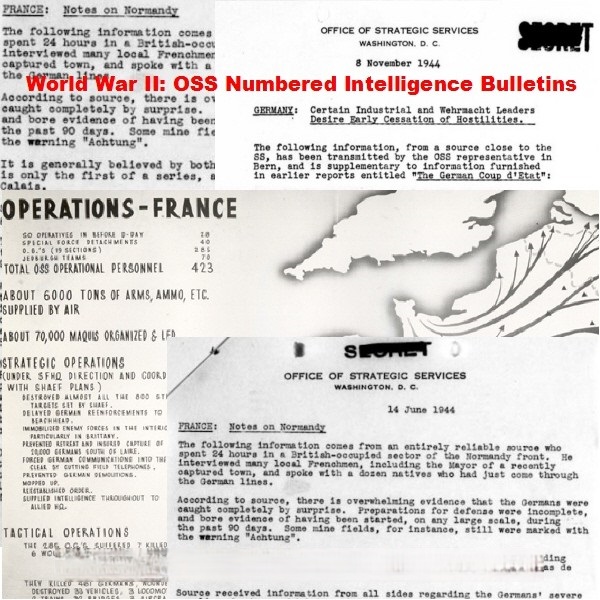
Description
OSS Bulletins: Key Events and Figures, 1943-1944
Timeline of Main Events (Based on OSS Bulletins)
This timeline is based on the topics mentioned in the provided descriptions of OSS Intelligence Bulletins. It reflects the intelligence gathered and reported by the OSS during the specified period.
- February 24-28, 1943: The Ribbentrop-Mussolini Meeting in Rome takes place. This event is considered significant enough to be the lead topic in the first OSS bulletin.
- March 10, 1943 (Bulletin Number 1):OSS reports on the significance of the Ribbentrop-Mussolini Meeting.
- OSS includes suggestions for U.S. Psychological Warfare against Axis satellites.
- OSS reports on the formation of Secret Armies within the French Resistance.
- OSS provides information on conditions in Alsace-Lorraine.
- March 17, 1943 (Bulletin Number 3):OSS reports on bomb damage at L’Orient in France.
- OSS provides information on the organization of a “Secret Army” within the French Underground.
- OSS reports on the extermination of Jews in Germany.
- OSS highlights the serious effects of anti-Allied propaganda in Morocco.
- OSS relays information on German and Japanese contributions to an understanding with Russia.
- July 28, 1943 (Bulletin Number 42):OSS reports on German anticipations of Allied landings in France.
- OSS provides information on the political situation in Yugoslavia, specifically the conflict between Pan-Serbs and Croats.
- OSS reports on the difficulties of labor mobilization in Germany.
- OSS relays information on German troop movements in Norway.
- December 4, 1943 (Bulletin Number 83):OSS reports on the progress of secret weapons development in Germany.
- OSS provides information on new troop levies and the ruthless use of new police powers in Germany.
- January 10, 1944 (Bulletin Number 93):OSS reports that German secret weapons are losing propaganda value.
- OSS provides information on the recruitment of young boys in Germany.
- OSS relays an enemy estimate of Soviet forces in the Far East.
- OSS reports that collaborationists in France are starting ostensible resistance movements.
- OSS provides information on conflicts between the Vatican and the Axis powers in Italy.
- February 8, 1944 (Bulletin Number 102):OSS reports on a message to Charles de Gaulle from Metropolitan Resistance groups in France.
- OSS details the needs of the Underground Army in France.
- OSS provides information on British plans for supplying the Maquis Resistance in France.
- OSS reports on the relationship between the French Resistance, Parliamentarians, and Algiers.
- OSS discusses the relationship between French Resistance groups and Allied policy.
- March 1943 – April 1945: The period during which the 1,297 pages of OSS intelligence bulletins were issued, covering a wide range of topics related to World War II in Europe and the Mediterranean. Key themes throughout this period include: Axis intentions and capabilities, resistance movements, political and social conditions, and Allied operations.
Cast of Characters (Principle People Mentioned)
This list includes the principal individuals explicitly named or heavily implied in the provided description of the OSS bulletins.
- Franklin D. Roosevelt: (Mentioned indirectly) President of the United States during World War II. The OSS bulletins were sent to the White House for his consumption and that of his military staff, indicating his role as a primary recipient of this intelligence.
- Joachim von Ribbentrop: German Foreign Minister during World War II. His meeting with Mussolini is highlighted as a significant event in the first bulletin.
- Benito Mussolini: Fascist dictator of Italy during World War II. His meeting with Ribbentrop was a key point of interest for Allied intelligence.
- Charles de Gaulle: Leader of the Free French Forces and later the provisional government of France during World War II. He is mentioned in connection with messages from the French Resistance and the broader political landscape of occupied France.
- Henri Giraud: French general who initially rivaled de Gaulle for leadership of the Free French forces. The “de Gaulle-Giraud situation” is listed as a topic covered in the bulletins, indicating his importance in the political dynamics of the French Resistance.
It’s important to note that the descriptions of the bulletins suggest the involvement of numerous other individuals and groups, such as OSS operatives, members of various European Resistance organizations, Nazi leaders (beyond Ribbentrop), leaders of Vichy France, and figures within the German military’s anti-Hitler resistance. However, these individuals are not explicitly named in the provided excerpts
World War II: OSS Numbered Intelligence Bulletins
1,297 pages of Office of Strategic Services, OSS, intelligence bulletins dating from March 1943 to April 1945.
Founded during World War II, The Office of Strategic Services, better known by its acronym OSS, was a United States intelligence agency. The OSS was a predecessor of the Central Intelligence Agency (CIA). The OSS was formed to coordinate espionage activities behind enemy.
These bulletins were sent to the White House for the consumption of President Roosevelt and military staff. These bulletins were created from intelligence gathered by OSS operatives working in Europe and the Mediterranean.
Among the many topics covered in these bulletins are: Axis intentions and capabilities; internal political situations, social and economic conditions; Axis peace overtures; the French Resistance; European Resistance organizations and activities; Palestine situation; Balkan political and military situation; Nazi leadership; de Gaulle-Giraud situation; Vichy France; anti-Hitler resistance in German military; Allied propaganda in Europe; Allied air operations in France and Germany; political and military situation in North Africa; internal political and military situation in Italy; and the German Underground.
The bulletins contain OSS ratings of the reliability of the sources and OSS comments about the information relayed in the bulletins. This collection includes an index listing each bulletin’s number, date, and subjects.
Highlights include:
Bulletin Number 1, March 10, 1943 – Topics include: Significance of the Ribbentrop-Mussolini Meeting (Feb. 24-28) in Rome, Suggestions for U.S. Psychological Warfare Against Axis Satellites, French Resistance: The Formation of Secret Armies, Conditions in Alsace-Lorraine.
Bulletin Number 3, March 17, 1943 – Topics include: France: Bomb Damage at L’Orient, The French Underground: Organization of a “Secret Army,” Germany: Extermination of Jews, Serious Effects of Anti-Allied Propaganda in Morocco, German and Japanese Contributions to an Understanding with Russia.
Bulletin Number 42, July 28, 1943 – Topics include: German Anticipations of Landings in France, Yugoslav Government: The Pan-Serbs vs. the Croats, Germany: Difficulties of Labor Mobilization, German Troop Movement in Norway.
Bulletin Number 83, December 4, 1943 – Topics include: Germany: Reports of the Progress of Secret Weapons, Germany: New Troop Levies; Ruthless Use of the New Police Powers
Bulletin Number 93, January 10, 1944 – Topics include: Germany: Secret Weapon Losing Propaganda Value; Recruitment of Young Boys, USSR: Enemy Estimate of Soviet Forces in the Far East, France: Collaborationists starting Ostensible Resistance Movements, Italy: Vatican Conflicts with the Axis.
Bulletin Number 102 February 8, 1944 – Topics include: France: Message to De Gaulle from Metropolitan Resistance Groups, France: Needs of the Underground Army, France: British Plans for Supplying the Maquis Resistance, France: The Resistance, the Parliamentarians, and Algiers, France: Resistance Groups and Allied Policy.




Related products
-
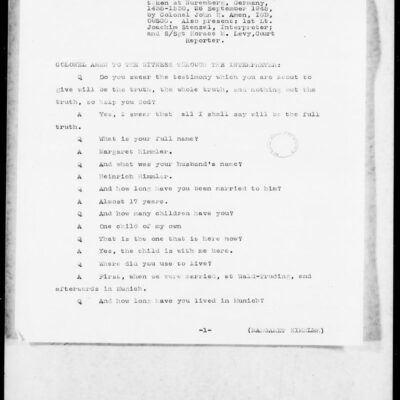

World War II: Interrogation Report and Diary of Margarete Himmler, Wife of Heinrich Himmler
$3.94 Add to Cart -
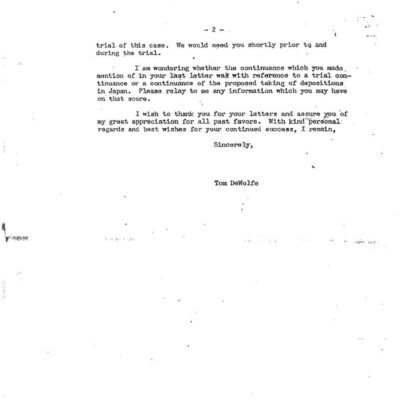
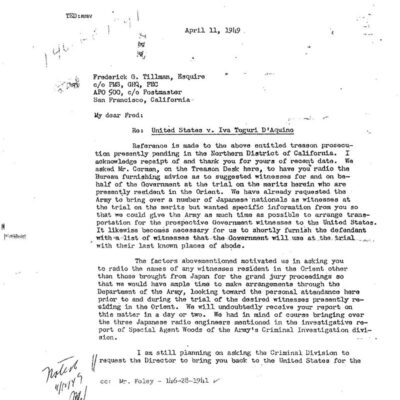
Tokyo Rose: Department of Justice Prosecution Files
$19.50 Add to Cart -
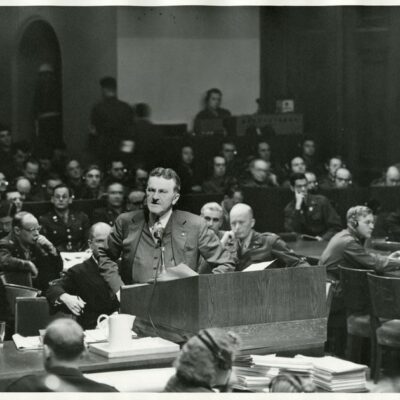

Trial Notes of Ralph G. Albrecht, Prosecutor at the Nuremberg Trials of World War II
$3.94 Add to Cart -
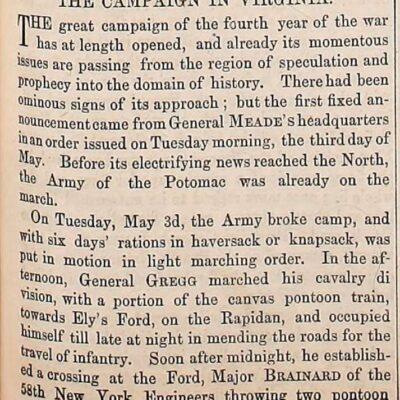
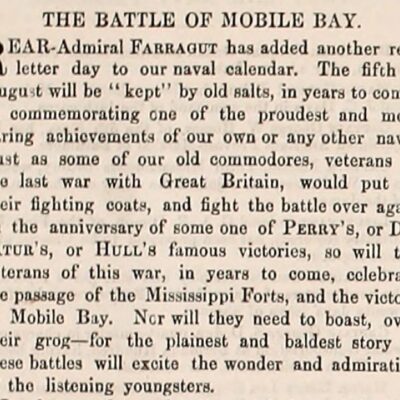
Civil War: Army Navy Journal & Gazette Volume 1 (1863 – 1864)
$19.50 Add to Cart